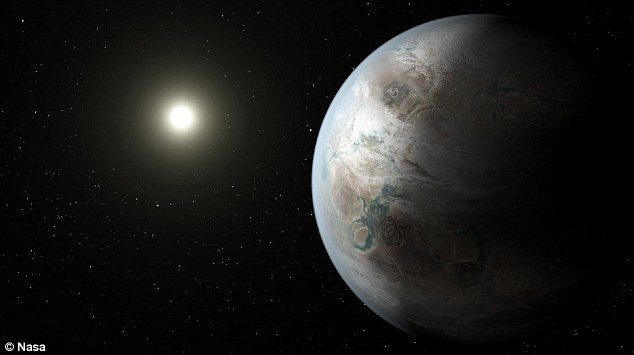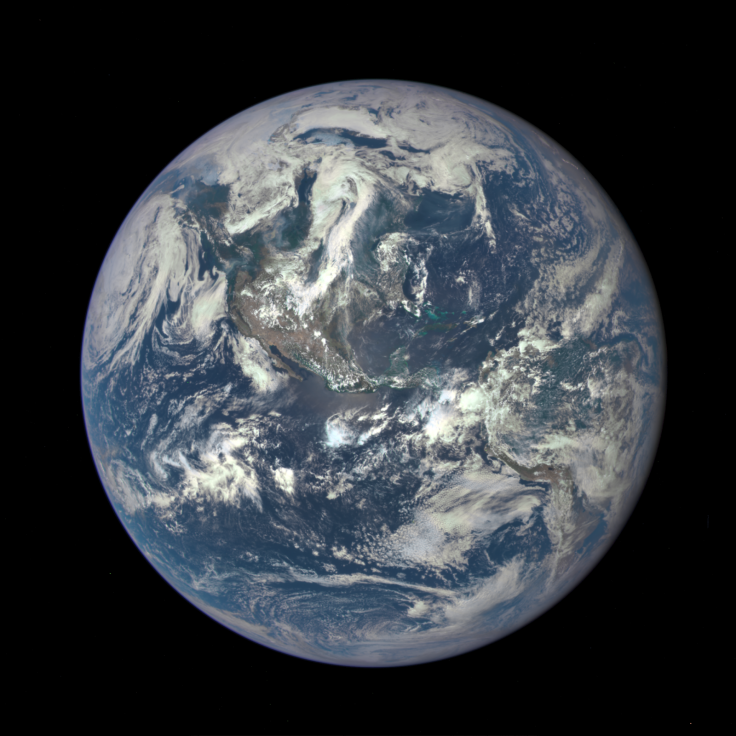Kepler 452b: Nice planet, when can we move in?

Perhaps it is a result of its rather uninspiring name that Kepler 452b – the new Earth-like planet that was revealed by Nasa this week – has become known as Earth 2.0 but those looking to upgrade to a new-and-improved mark two world may be waiting a long time.
Kepler 452b is 1,400 light years from Earth meaning those that left on a yet-to-be-invented interstellar ship capable of reaching the speed of light would not arrive until around 3,415AD.
The planet – which scientists say appears to be close enough to its sun to sustain life – is a staggering ten thousand million million km from Earth.
We might receive a 1,400-year-old message from them, but they may be very different now compared with when it was sent
The fastest shuttle currently operating in space can travel 38,000 miles per hour and since its launch in 1977 has only recently left our solar system. Brendan Owens, astronomer at the Royal Observatory Greenwich, has crunched the numbers.
"That is the fastest one we have and if it was on a direct course it would take 24 million years to reach its destination," he told IBTimes UK.
"It gives a sense of scale because space is so vast. The distances between stars are enormous and this is actually a very distant star."
What is Kepler 452b?

Kepler 452b is described as a "bigger, older cousin" to our own planet and is the smallest planet so far that orbits in a habitable zone around a star similar to the Sun.
The planet is 60% larger than Earth, and its orbit is only 20 days longer than our planet's.
Scientists believe that its six billion years in the "habitable zone" near the star, which has a similar mass and temperature to the Sun, is more than enough time for life to have evolved in its oceans or on its surfaces.
The habitable zone is defined as a region near a star where temperatures are right to enable water to form, regarded as essential for the creation of life similar to that on Earth.
Its star is 1.5 billion years older than our Sun, meaning it is larger and brighter, as stars grow as they age, meaning Kepler 452b receives 10% more energy than Earth. Scientists said this could afford a glimpse into a drier future for our own planet, as oceans evaporate and the surface heats up.
"Kepler 452b could be experiencing now what the Earth will undergo more than a billion years from now," said Doug Caldwell, a Seti Institute scientist on the Keplar mission.
Nasa announced the discovery alongside that of 12 other possibly habitable exoplanets, or planets that orbit a star other than the Sun, and 500 others in total.
Without the invention of a Star Trek-type warp drive capable of travelling faster than the speed of light, it would take a huge space shuttle to even begin to make the journey, said Owens, capable of supporting multiple generations of human beings.
"If we were able to travel interstellar in the future you would have the idea of the generation shift: so it would not be you that reached it but your distant relatives, your grandchildren or great-grandchildren. You would need an enormous ship which would have to be able to support generations of people living in space," he said.
Active volcanoes
So in lieu in visiting Kepler 452b, scientists will continue to study it and in particular the fact that at six billion years old it is 1.4 billion years older than our own planet. As a result, it could teach us a lot about how Earth will perform in the future.
"It's awe-inspiring to consider that this planet has spent six billion years in the habitable zone of its star; longer than Earth. That's substantial opportunity for life to arise, should all the necessary ingredients and conditions for life exist on this planet," said Jon Jenkins, Kepler data analysis lead at Nasa's Ames Research Center in Moffett Field, California, who led the team that discovered the planet.
Jenkins said that Kepler 452b was likely to have stronger gravity than our own, and to be rocky, with active volcanoes. Owens adds that it is still possible that the planet is gaseous.
Our best bet with the 1,000 or so planets that Nasa has found that are a requisite distance from their relative stars or suns to sustain life is transmitting a message rather than landing a shuttle. Owens says that numerous experiments are currently underway to transmit messages to other galaxies, but again the distances involved present a distinct challenge.
Even if Earth was able to transmit a message at the speed of light to Kepler 452b, for example – or more likely, given its seniority, that it would transmit a message to earth – it would be 1,400 years before communication was made.
"We might receive a 1,400-year-old message from them, but they may be very different now compared with when it was sent," he said.
© Copyright IBTimes 2025. All rights reserved.






















